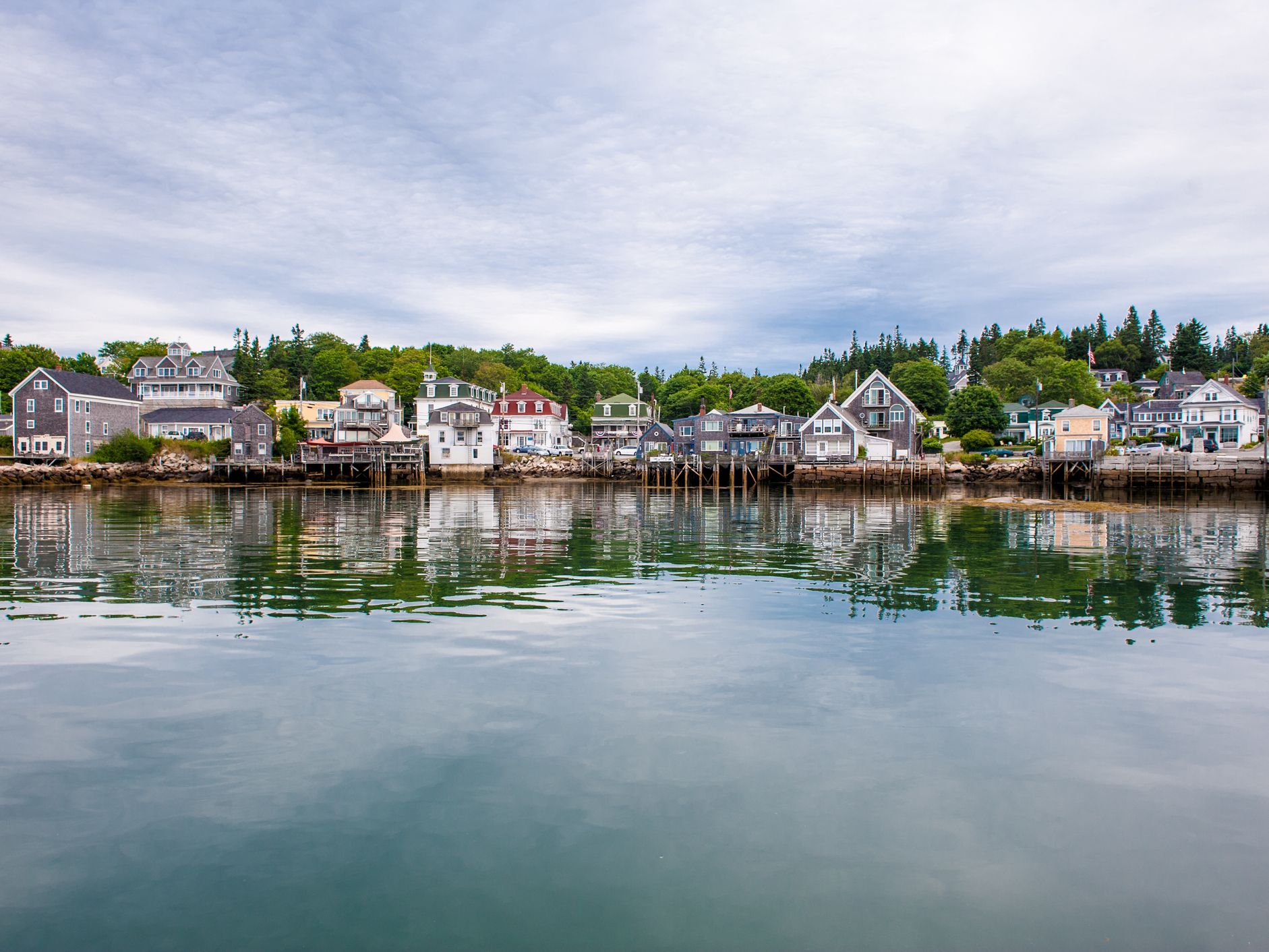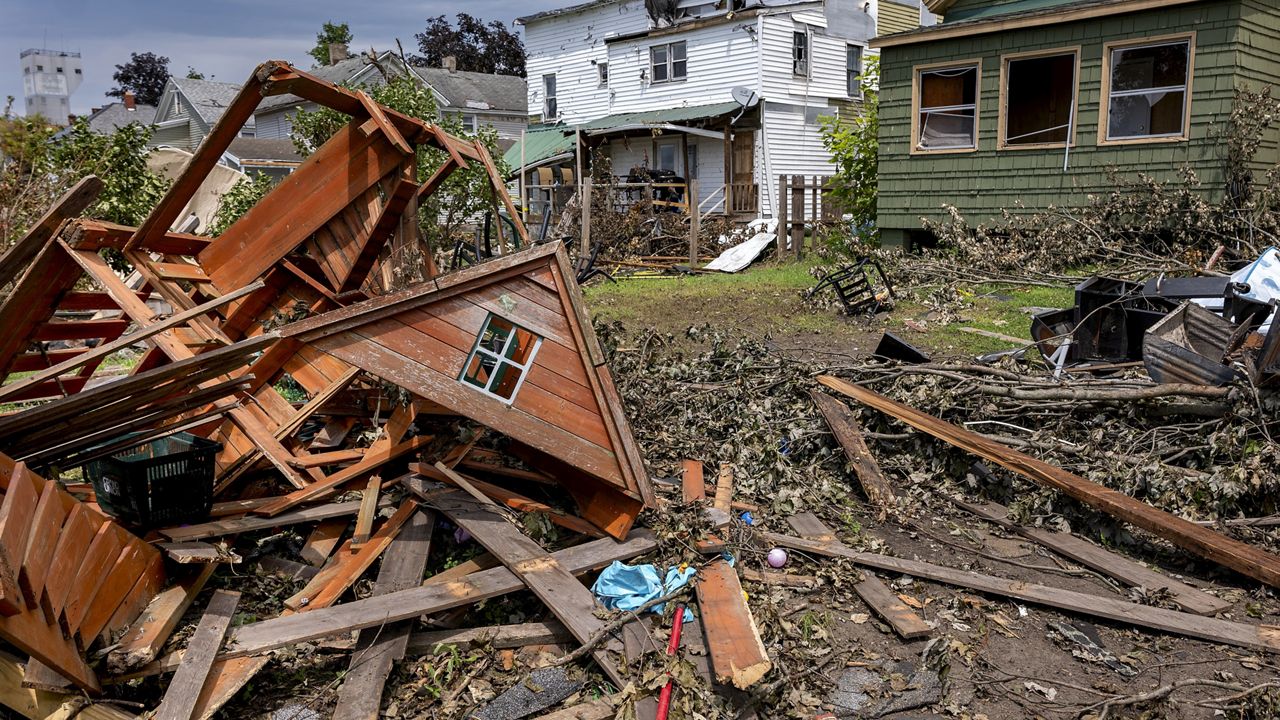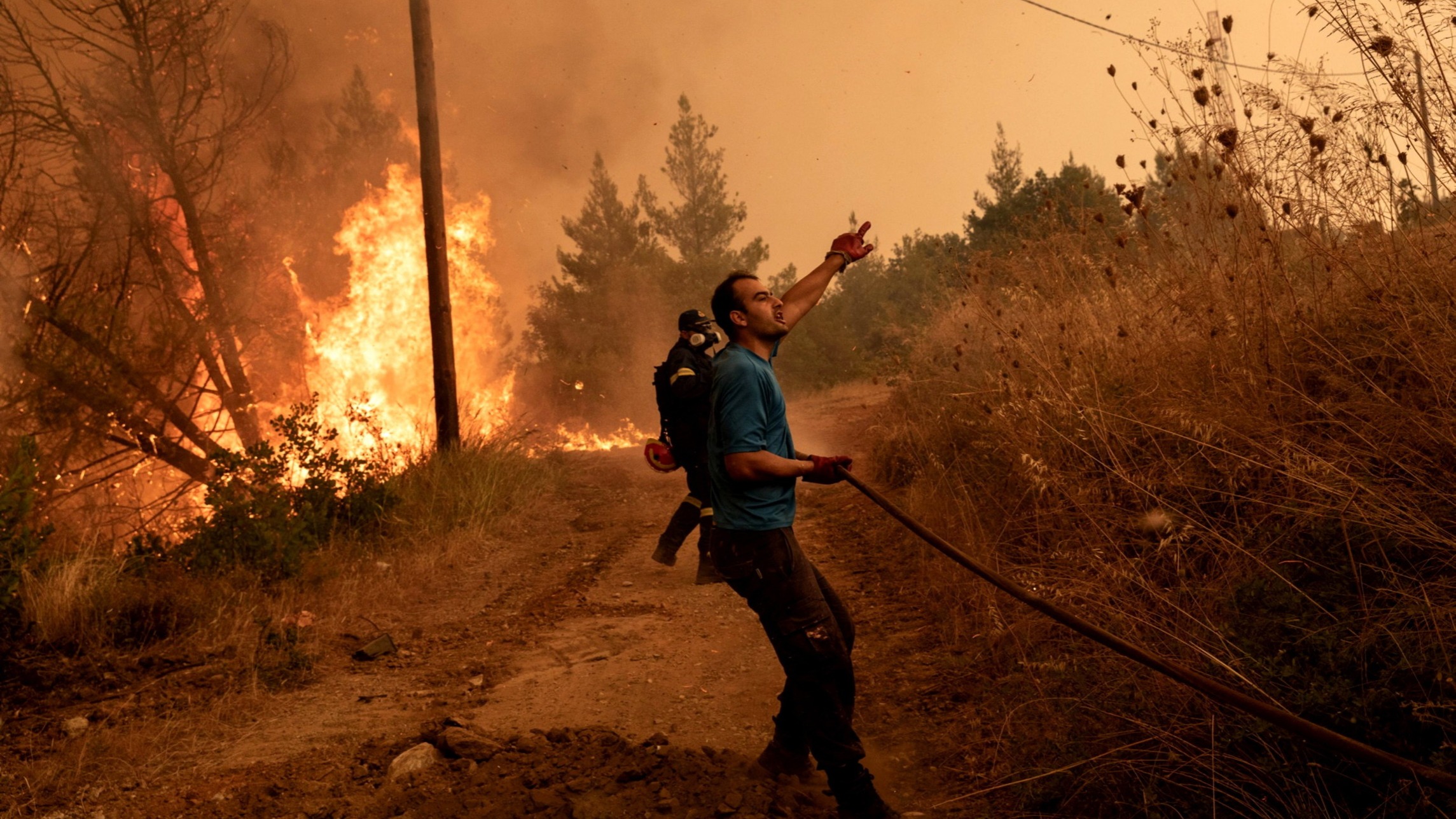Is YOUR City One of the Most at Risk for Climate Disasters? – House Beautiful

Report on Climate Risk Integration in U.S. Real Estate and Alignment with Sustainable Development Goals
Introduction: Shifting Priorities in Housing Towards Climate Resilience
The increasing frequency and intensity of climate-related disasters are fundamentally altering the criteria for property acquisition in the United States. Prospective homebuyers are now extending their due diligence beyond traditional metrics to include climate risk assessments. This shift directly addresses the objectives of the United Nations’ Sustainable Development Goals (SDGs), particularly SDG 11 (Sustainable Cities and Communities) and SDG 13 (Climate Action). In response to this growing awareness, real estate platforms such as Zillow have begun integrating climate risk data into property listings, providing a critical tool for building more resilient and sustainable communities.
National Climate Risk Assessment
An analysis of new property listings across the nation reveals significant exposure to various climate hazards. This data is essential for stakeholders working towards SDG 11.5, which aims to reduce the economic and human impact of disasters. The primary risk categories identified are:
- Air Quality
- Flooding
- Fires
- Extreme Wind
- Extreme Heat
According to recent survey data, the nationwide risk distribution for newly listed homes is as follows:
- Extreme Heat: 55.5% of listings face a major risk.
- Extreme Wind: One-third of listings face a major risk.
- Wildfire: 16.7% of listings face a major risk.
- Air Quality: 13% of listings face a major risk.
- Flooding: 12.8% of listings face a major risk.
Alignment with Sustainable Development Goals
The incorporation of climate risk into real estate decision-making is a significant step towards achieving several key SDGs:
- SDG 11: Sustainable Cities and Communities: By providing transparent risk data, the real estate market can better support the development of safe, resilient, and sustainable human settlements. This directly contributes to target 11.6, which focuses on reducing the adverse environmental impact of cities, including air quality.
- SDG 13: Climate Action: This initiative represents a practical adaptation strategy to the unavoidable impacts of climate change, empowering individuals and communities to make informed choices that strengthen their resilience.
- SDG 3: Good Health and Well-being: Assessing risks such as extreme heat and poor air quality is vital for protecting public health and well-being.
- SDG 6: Clean Water and Sanitation: Understanding flood risks is crucial for protecting water infrastructure and ensuring access to clean water.
- SDG 15: Life on Land: Highlighting wildfire risks brings attention to the need to protect and restore terrestrial ecosystems.
Case Studies: High-Risk U.S. Urban Areas
An examination of specific metropolitan areas highlights the localized severity of these climate risks and their implications for sustainable urban development.
-
San Jose, California
Primary Risk: Air Quality. Over 98% of new home listings are identified as having a major air quality problem, exacerbated by local topography and pollution. This poses a direct challenge to SDG 3 (Good Health and Well-being) and SDG 11.6 (reducing the environmental impact of cities).
-
Riverside, California
Primary Risk: Wildfire. Driven by high temperatures and strong winds, over 70% of new homes for sale carry a major fire risk advisory. This situation underscores the threat to both human settlements (SDG 11) and terrestrial ecosystems (SDG 15).
-
New Orleans, Louisiana
Primary Risk: Flooding. Due to rising sea levels, over 76% of homes are listed with major flood risks. This presents a critical challenge to creating resilient infrastructure and protecting communities, a core tenet of SDG 11, and threatens water systems as outlined in SDG 6.
-
Baltimore, Maryland
Primary Risk: Extreme Heat. Nearly 98% of home listings include a heat risk advisory, reflecting a nationwide trend of rising temperatures that strain public health and energy infrastructure. This directly relates to the urgent need for climate adaptation strategies under SDG 13 and the protection of SDG 3.
-
Virginia Beach, Virginia
Primary Risk: Extreme Wind. Its coastal location makes the city highly vulnerable, with 97.7% of new homes listed as prone to extreme wind risk. This emphasizes the need for resilient construction and planning to ensure the sustainability and safety of coastal communities as envisioned in SDG 11.
1. Which SDGs are addressed or connected to the issues highlighted in the article?
The article discusses issues related to climate change, natural disasters, and their impact on housing and urban living. Based on this, the following Sustainable Development Goals (SDGs) are addressed:
-
SDG 11: Sustainable Cities and Communities
This goal is central to the article, which focuses on the safety and resilience of human settlements (cities) in the face of climate-related risks. It explores how factors like floods, fires, and air quality affect the desirability and safety of living in certain urban areas like San Jose, New Orleans, and Baltimore.
-
SDG 13: Climate Action
The entire premise of the article is based on the impacts of climate change. It explicitly mentions “climate-related disasters,” “climate risk,” and the “climate crisis.” The discussion revolves around adapting to these changes by making informed decisions, which directly relates to taking action on climate change and its impacts.
-
SDG 3: Good Health and Well-being
This goal is connected through the discussion of environmental factors that directly impact human health. The article highlights risks such as poor “air quality” due to “city smog, air pollution,” and “extreme heat,” both of which pose significant health threats to residents.
2. What specific targets under those SDGs can be identified based on the article’s content?
Several specific targets can be identified from the article’s discussion of climate risks and urban living.
-
Under SDG 11 (Sustainable Cities and Communities):
- Target 11.5: “By 2030, significantly reduce the number of deaths and the number of people affected and substantially decrease the direct economic losses relative to global gross domestic product caused by disasters…” The article directly addresses this by highlighting the “rise” in “climate-related disasters, including hurricanes, devastating fires, floods, and tsunamis” and how they impact homeowners and potential buyers. The focus on “climate risk” in real estate is a direct response to the need to mitigate the effects of these disasters on people and property.
- Target 11.6: “By 2030, reduce the adverse per capita environmental impact of cities, including by paying special attention to air quality…” This is clearly identified when the article discusses San Jose, where “over 98 percent of new home listings… have a major air quality problem” due to “city smog, air pollution.”
- Target 11.b: “By 2020, substantially increase the number of cities and human settlements adopting and implementing integrated policies and plans towards… adaptation to climate change, disaster risk reduction…” The article showcases a private-sector example of this through Zillow’s initiative to integrate “climate risk statistics and ratings on all its for-sale home listings,” which serves as a tool for disaster risk reduction and climate adaptation at the individual and community level.
-
Under SDG 13 (Climate Action):
- Target 13.1: “Strengthen resilience and adaptive capacity to climate-related hazards and natural disasters in all countries.” The article is fundamentally about building adaptive capacity. By providing data on risks like “extreme heat,” “extreme wind,” “wildfire risk,” and “flood risks,” it empowers individuals to make decisions that strengthen their personal resilience to these climate-related hazards.
- Target 13.3: “Improve education, awareness-raising and human and institutional capacity on climate change mitigation, adaptation, impact reduction and early warning.” The article itself is a form of awareness-raising. Furthermore, it describes how Zillow’s inclusion of climate data on its platform is a direct effort to increase “awareness and concern over the climate crisis” and improve the human capacity to make informed decisions.
-
Under SDG 3 (Good Health and Well-being):
- Target 3.9: “By 2030, substantially reduce the number of deaths and illnesses from hazardous chemicals and air, water and soil pollution and contamination.” The article’s focus on the “major air quality problem” in San Jose, caused by “city smog” and “air pollution,” directly relates to this target, as poor air quality is a leading cause of respiratory illnesses. Similarly, the risk of “extreme heat,” as seen in Baltimore, is a direct threat to well-being and can lead to heat-related illnesses and deaths.
3. Are there any indicators mentioned or implied in the article that can be used to measure progress towards the identified targets?
Yes, the article provides several quantitative and qualitative indicators, primarily through the Zillow survey data, that can be used to measure exposure and vulnerability related to the identified targets.
-
Percentage of new home listings facing major climate risks: The article provides specific statistics that serve as direct indicators of vulnerability.
- “more than half (55.5 percent) of all new listings nationwide face a major risk of extreme heat.”
- “a third of homes are at major risk of extreme wind exposure.”
- “16.7 percent face a major wildfire risk.”
- “13 percent of newly listed homes nationwide have a major air quality risk.”
- “12.8 percent face a major risk of flooding.”
These percentages can be used as proxy indicators for Target 11.5 (measuring populations affected by disaster risk) and Target 13.1 (measuring exposure to climate-related hazards).
-
City-specific risk percentages: The article provides localized data that can measure progress or lack thereof in specific urban areas.
- In San Jose, “over 98 percent of new home listings… have a major air quality problem.” (Indicator for Target 11.6 and Target 3.9)
- In Riverside, “over 70 percent of new homes for sale are… listed with a major fire risk advisory.” (Indicator for Target 11.5)
- In New Orleans, “over 76 percent of homes are listed with a disclaimer of major flood risks.” (Indicator for Target 11.5)
- In Baltimore, “nearly 98 percent of home listings to have a heat risk advisory.” (Indicator for Target 13.1 and Target 3.9)
- In Virginia Beach, “97.7 percent of new homes listed for sale are prone to extreme wind risk advisories.” (Indicator for Target 11.5)
- Availability of public climate risk information: The article’s central point that “Zillow is now including climate risk statistics and ratings on all its for-sale home listings” is a qualitative indicator. This demonstrates progress towards Target 13.3 by showing an increase in institutional capacity for awareness-raising and providing tools for climate change adaptation.
4. Table of SDGs, Targets, and Indicators
| SDGs | Targets | Indicators Identified in the Article |
|---|---|---|
| SDG 11: Sustainable Cities and Communities |
11.5: Reduce the number of people affected by disasters and decrease direct economic losses.
11.6: Reduce the adverse per capita environmental impact of cities, especially regarding air quality. |
Percentage of homes at risk from specific disasters (e.g., “12.8 percent face a major risk of flooding” in the US; “over 76 percent” in New Orleans; “over 70 percent” face fire risk in Riverside).
Percentage of homes with a major air quality problem (e.g., “over 98 percent of new home listings in San Jose”). |
| SDG 13: Climate Action |
13.1: Strengthen resilience and adaptive capacity to climate-related hazards.
13.3: Improve education and awareness-raising on climate change adaptation. |
Percentage of new listings facing major climate risks (e.g., “55.5 percent… face a major risk of extreme heat”; “a third of homes are at major risk of extreme wind exposure”).
Integration of climate risk statistics and ratings into public real estate platforms (e.g., Zillow’s initiative). |
| SDG 3: Good Health and Well-being | 3.9: Substantially reduce deaths and illnesses from air pollution and other contamination. |
Percentage of homes in an area with a major air quality problem due to “city smog, air pollution” (e.g., “over 98 percent” in San Jose).
Percentage of homes with a heat risk advisory, indicating exposure to extreme temperatures (e.g., “nearly 98 percent” in Baltimore). |
Source: housebeautiful.com

What is Your Reaction?
 Like
0
Like
0
 Dislike
0
Dislike
0
 Love
0
Love
0
 Funny
0
Funny
0
 Angry
0
Angry
0
 Sad
0
Sad
0
 Wow
0
Wow
0















































































